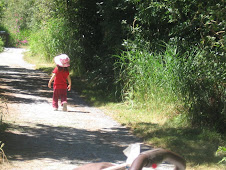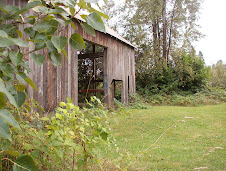The Boomer Generation view themselves as being much younger than their parents did at the same age. Sixty-five is not considered to be old by many Boomers. It is the beginning of a new life – for some it's freedom to travel and be adventurous, for others it may be starting their own long dreamed of businesses or new careers.
Many, men as well as women, are style and appearance conscious. These Boomers will exercise with a passion and deny the fact of their aging. They will look for ways to continue to appear young. They will exfoliate their skin, use facial masks, use B vitamins, flax seed oil and do facial exercises. They will keep their skin hydrated and eat grapes, honey, fruits and nuts. They will search to discover ways to reduce eye puffiness and sill work towards getting rid of cellulite. They will use injections to help eliminate the lines in their skin. No other generation before us has done this.
They try to keep their bodies active by taking yoga or Zumba classes and their minds by learning new dance steps, an instrument or a new language. A one hundred year old man was recently on the news for having completed a marathon. Although he isn't in the Boomer generation, that is the mentality of many Boomers. It is an 'I can do it' mantra.
For some they fly south to become Snow Birds in the winter months to enjoy life in the warm sun while others look after aging parents who have also lived longer than their parents before them.
But whatever path they have chosen to take, they will do it. They are goal oriented and independent but they are also the 'sandwich generation' and as such many of them will become caregivers for the previous generation.
Tuesday, November 22, 2011
The Elderly and Dementia
Dementia is the decline of cognitive functions, reasoning and the loss of long and short-term memory. It will impair such activities as driving, doing household chores and personal care and hygiene.
Although it was once considered a normal part of aging, we now know that it is caused by such things as underlying medical conditions but it is most common in the elderly. After 85 years of age, almost half of all adults will have it to some degree.
This decline in intellectual functioning will almost certainly have a negative impact on the quality of life and on relationships. It can affect how people think and it usually gets worse over time.
Dementia is caused by damage or changes to the brain which includes strokes, tumors or head injuries. Strokes are the most common cause, called vascular dementia. Other health issues such as Parkinson's Disease, Huntington's Disease, HIV/Aids, Multiple Sclerosis and Diabetes play a part in dementia. Also an under active thyroid gland, not getting enough B12, reactions to medications or poor blood circulation to the brain which can be a result of smoking is detrimental. Over use of alcohol can also create dementia-like symptoms as can depression which can affect the memory.
The first symptom is usually memory loss. Other symptoms include difficulty understanding words, getting lost in places they know well, inability to make a list and go shopping, confusion, forgetfulness, lack of interest in life thereby becoming anti-social. In most cases they will cease to look after themselves and their homes as the dementia progresses. There may occasionally be some aggressiveness, a tendency towards being argumentative or even violence.
To diagnose a patient, a doctor will first do a physical examination, ask questions and do memory and other mental tests. They will also probably do blood tests, an MRI and a CT scan. There is a medication which can be taken which will slow the progress of dementia.
It will be important for the dementia sufferer to have an active social life, to exercise, to watch their weight, control blood pressure and cholesterol levels and to keep their body, and most importantly, their mind active.
As a family member we can help by putting a list of important numbers by the telephone and by installing handrails in the bathroom. It will be very important to ensure that a family member who is suffering from dementia is not allowed to become isolated.
But most importantly, it is necessary to keep the mind and body active while still young to help delay the beginning signs of dementia. Being proactive by doings things to delay what may later be is better than later trying to control what already is.
Although it was once considered a normal part of aging, we now know that it is caused by such things as underlying medical conditions but it is most common in the elderly. After 85 years of age, almost half of all adults will have it to some degree.
This decline in intellectual functioning will almost certainly have a negative impact on the quality of life and on relationships. It can affect how people think and it usually gets worse over time.
Dementia is caused by damage or changes to the brain which includes strokes, tumors or head injuries. Strokes are the most common cause, called vascular dementia. Other health issues such as Parkinson's Disease, Huntington's Disease, HIV/Aids, Multiple Sclerosis and Diabetes play a part in dementia. Also an under active thyroid gland, not getting enough B12, reactions to medications or poor blood circulation to the brain which can be a result of smoking is detrimental. Over use of alcohol can also create dementia-like symptoms as can depression which can affect the memory.
The first symptom is usually memory loss. Other symptoms include difficulty understanding words, getting lost in places they know well, inability to make a list and go shopping, confusion, forgetfulness, lack of interest in life thereby becoming anti-social. In most cases they will cease to look after themselves and their homes as the dementia progresses. There may occasionally be some aggressiveness, a tendency towards being argumentative or even violence.
To diagnose a patient, a doctor will first do a physical examination, ask questions and do memory and other mental tests. They will also probably do blood tests, an MRI and a CT scan. There is a medication which can be taken which will slow the progress of dementia.
It will be important for the dementia sufferer to have an active social life, to exercise, to watch their weight, control blood pressure and cholesterol levels and to keep their body, and most importantly, their mind active.
As a family member we can help by putting a list of important numbers by the telephone and by installing handrails in the bathroom. It will be very important to ensure that a family member who is suffering from dementia is not allowed to become isolated.
But most importantly, it is necessary to keep the mind and body active while still young to help delay the beginning signs of dementia. Being proactive by doings things to delay what may later be is better than later trying to control what already is.
Wednesday, November 2, 2011
When Does Assisted Living Become Necessary and What to Look For
When it becomes apparent that an Assisted Living facility may be necessary it will be important to determine which one is baest for your needs based on your physical and financial requirements as well as your lifestyle. This will include how much help is needed, what can be afforded and how close it is to family and friends.
What indications are that will determine the need to look for Assisted Living facilities?
- It is ideal for those who may require help with meal preparations, doing their housekeeping, showering, and remembering to take their medications.
- Not eating properly as my mother did by having pork 'n' beans or canned tomatoes over toast or soup. Even when I cooked meals for her, she preferred to open a can.
- Falling frequently is another indication. When my mother fell in the bathroom, pulling the towel rod off the wall and hitting her shoulder on the tub, we knew we had to think of other options. She had had other falls but this was the worst. Bruising will be a tell-tale sign.
- When minimal, or no housekeeping is being done.
- Forgetting to take medications. This is usually a result of memory loss.
- Confusion and strange behaviour. On one visit to my mother's place, she had a pot on the stove with the burner on beneath it. She said she was drying the pot. My mother was an extremely intelligent woman so this was definitely strange behaviour for her.
- When isolation and loneliness become a factor and help is required, an assisted living facility becomes the ideal choice because they receive the help they need but are still able to retain their independence.
What are some of the things to do when choosing this type of facility?
- Visit several in the area of your choice to get a feel for the place. Is it homey? Does it feel comfortable? Is it close to friends and family?
- Assess how the staff interact with the residents. Do they take the time to talk to them or are they rushed? Are they warm and friendly?
- Is there enough staff, especially at busy times such as meals and when medications are necessary.
- Speak to as many residents as possible to determine whether they are happy living there.
- Ask a lot of questions of both the residents and the staff to get as much information as possible before making a decision.
- Check to see if there have been any complaints about the facility.
- Ask to see certification inspection reports.
- Ask to see the Resident Agreement which outlines services, prices, staffing, extra charges and house rules. Do they charge extra for assistance with showers, toilet needs or giving medications, etc. Determine what their obligation is as well as your own.
- Are there extra services and assistance such as a manicurit, hairdresser or podiatrist?
- Is there a 24 hour response system in each unit?
- Is there security on the doors?
- Are there handrails in the hallways and bathrooms, are the hallways and elevators wide enough to allow for walkers and wheelchairs?
- Do they clean the rooms and do laundry? Is the facility in general, clean and well maintained?
- Do they have cable and telephone hook-up in each unit and if so, is there an additional cost?
- Do they consider and accommodate dietary needs?
- Do they allow overnight guests and are residents allowed to keep their pets?
- What activities are available for the residents? Do they have regular bus trips?
- Eat a meal there to determine the quality of food and whether staff give assistance if necessary.
- Is there another level of care provided when more care is required than what is offered in an Assisted Living facility? My mother lived in a place that offered three levels of care.
- Try to determine by talking to residents what the staff turnover rate is?
There is a lot to be considered when looking for an Assisted Living facility because it is a stressful change for elderly people. None of us like changes so it is important to make the best choice at the beginning before a move is made.
What indications are that will determine the need to look for Assisted Living facilities?
- It is ideal for those who may require help with meal preparations, doing their housekeeping, showering, and remembering to take their medications.
- Not eating properly as my mother did by having pork 'n' beans or canned tomatoes over toast or soup. Even when I cooked meals for her, she preferred to open a can.
- Falling frequently is another indication. When my mother fell in the bathroom, pulling the towel rod off the wall and hitting her shoulder on the tub, we knew we had to think of other options. She had had other falls but this was the worst. Bruising will be a tell-tale sign.
- When minimal, or no housekeeping is being done.
- Forgetting to take medications. This is usually a result of memory loss.
- Confusion and strange behaviour. On one visit to my mother's place, she had a pot on the stove with the burner on beneath it. She said she was drying the pot. My mother was an extremely intelligent woman so this was definitely strange behaviour for her.
- When isolation and loneliness become a factor and help is required, an assisted living facility becomes the ideal choice because they receive the help they need but are still able to retain their independence.
What are some of the things to do when choosing this type of facility?
- Visit several in the area of your choice to get a feel for the place. Is it homey? Does it feel comfortable? Is it close to friends and family?
- Assess how the staff interact with the residents. Do they take the time to talk to them or are they rushed? Are they warm and friendly?
- Is there enough staff, especially at busy times such as meals and when medications are necessary.
- Speak to as many residents as possible to determine whether they are happy living there.
- Ask a lot of questions of both the residents and the staff to get as much information as possible before making a decision.
- Check to see if there have been any complaints about the facility.
- Ask to see certification inspection reports.
- Ask to see the Resident Agreement which outlines services, prices, staffing, extra charges and house rules. Do they charge extra for assistance with showers, toilet needs or giving medications, etc. Determine what their obligation is as well as your own.
- Are there extra services and assistance such as a manicurit, hairdresser or podiatrist?
- Is there a 24 hour response system in each unit?
- Is there security on the doors?
- Are there handrails in the hallways and bathrooms, are the hallways and elevators wide enough to allow for walkers and wheelchairs?
- Do they clean the rooms and do laundry? Is the facility in general, clean and well maintained?
- Do they have cable and telephone hook-up in each unit and if so, is there an additional cost?
- Do they consider and accommodate dietary needs?
- Do they allow overnight guests and are residents allowed to keep their pets?
- What activities are available for the residents? Do they have regular bus trips?
- Eat a meal there to determine the quality of food and whether staff give assistance if necessary.
- Is there another level of care provided when more care is required than what is offered in an Assisted Living facility? My mother lived in a place that offered three levels of care.
- Try to determine by talking to residents what the staff turnover rate is?
There is a lot to be considered when looking for an Assisted Living facility because it is a stressful change for elderly people. None of us like changes so it is important to make the best choice at the beginning before a move is made.
Are There More Challenges for Youth Raised in Single Parent Homes Than in Two-Parent Families?
At-risk youth are those who engage in sexual behavior and drug and alcohol use. But is at-risk behavior because of these problems or does it have more to do with the family structure and dynamics rather than the fact of being raised in a single parent home?
Dysfunction can be found in single parent families as well as blended families and original two-parent families. Poor parenting is not limited to single parents. According to studies, there is no doubt that family dysfunction creates a risk for juvenile delinquency. But it goes even deeper than that. Risk factors can be also based on individual characteristics of the child such as their personality and temperament, their peers and the community.
When considering family dysfunction, parental alcohol and drug abuse, anti-social parents, family conflicts, poor parenting practices, verbal, emotional or sexual abuse, low income levels, poor neighborhoods, crime in the area, the presence of youth gangs and mental health issues are all problems contributing to high risk youth.
Poor parenting includes lack of supervision, over permissiveness, inconsistent discipline, no clear limits, parent-child conflict, parents involved in criminal activities, excessive punishment and little interest or affection shown to the child. All of these can result in hyperactivity, aggressiveness and poor academic performance in young children with more serious consequences as they get older. Sixty-three percent of boys with a father involved in criminal activity are at-risk. Those who have witnessed violence in the home are 2.2 times more likely to be aggressive and at-risk.
According to some studies, it is believed that children of single parents are only considered to be more at-risk because of the potential for financial vulnerability, the chances of possibly living in a poorer neighborhood and perhaps having less supervision. But the connection seems to be almost non-existent where serious offenses are concerned only being somewhat stronger regarding classroom discipline and other behavioral problems.
There are ways, however, of mitigating these risks to youth whether they come from single parent families, blended families or two-parent families. They include having involved and supportive parents, harmonious family relationships, parents who practice appropriate parenting, those that give adequate supervision, sufficient affection, where the family is involved in extracurricular and school activities and when respect is shown to others by their parents. Other factors include the level of parental education and community relationships as a family. Single parent families with the above protective factors are no more at-risk than other families.
According to the latest Census in Canada, for the first time married people are in the minority but the youth crime rate has gone down six percent from a decade earlier. Based on these statistics, I believe youth can be at-risk in any family that does not practice protective measures to keep their children safe.
Dysfunction can be found in single parent families as well as blended families and original two-parent families. Poor parenting is not limited to single parents. According to studies, there is no doubt that family dysfunction creates a risk for juvenile delinquency. But it goes even deeper than that. Risk factors can be also based on individual characteristics of the child such as their personality and temperament, their peers and the community.
When considering family dysfunction, parental alcohol and drug abuse, anti-social parents, family conflicts, poor parenting practices, verbal, emotional or sexual abuse, low income levels, poor neighborhoods, crime in the area, the presence of youth gangs and mental health issues are all problems contributing to high risk youth.
Poor parenting includes lack of supervision, over permissiveness, inconsistent discipline, no clear limits, parent-child conflict, parents involved in criminal activities, excessive punishment and little interest or affection shown to the child. All of these can result in hyperactivity, aggressiveness and poor academic performance in young children with more serious consequences as they get older. Sixty-three percent of boys with a father involved in criminal activity are at-risk. Those who have witnessed violence in the home are 2.2 times more likely to be aggressive and at-risk.
According to some studies, it is believed that children of single parents are only considered to be more at-risk because of the potential for financial vulnerability, the chances of possibly living in a poorer neighborhood and perhaps having less supervision. But the connection seems to be almost non-existent where serious offenses are concerned only being somewhat stronger regarding classroom discipline and other behavioral problems.
There are ways, however, of mitigating these risks to youth whether they come from single parent families, blended families or two-parent families. They include having involved and supportive parents, harmonious family relationships, parents who practice appropriate parenting, those that give adequate supervision, sufficient affection, where the family is involved in extracurricular and school activities and when respect is shown to others by their parents. Other factors include the level of parental education and community relationships as a family. Single parent families with the above protective factors are no more at-risk than other families.
According to the latest Census in Canada, for the first time married people are in the minority but the youth crime rate has gone down six percent from a decade earlier. Based on these statistics, I believe youth can be at-risk in any family that does not practice protective measures to keep their children safe.
Subscribe to:
Comments (Atom)




















































































